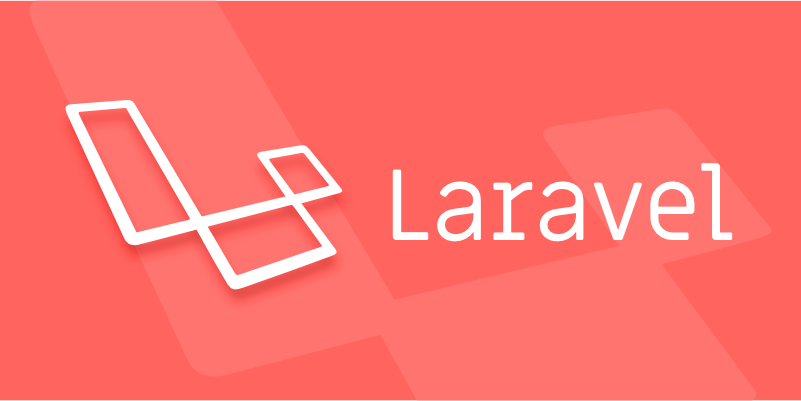Create a Laravel project using the Composer container; 2. Write a Dockerfile containing PHP extensions and Apache configuration; 3. Define app, MySQL, and phpMyAdmin services through docker-compose.yml; 4. Configure the Apache virtual host to support Laravel routing; 5. Update the .env file to set up database connections; 6. Run docker-compose up -d --build to start the container; 7. Execute Composer installation and key generation in the container; 8. Optionally run migration; 9. Use docker-compose exec to execute the Artisan command during development, and the code is synchronized in real time. After modifying the Dockerfile, the image needs to be rebuilt, and finally realize the local development environment deployment of Laravel in Docker.

Setting up Laravel with Docker isn't complicated once you understand the basics of containers and how to structure your services. Here's a practical guide to get a Laravel project running in Docker using Docker Compose .

? 1. Create a New Laravel Project (or Use Existing One)
If you're starting fresh, use Composer via Docker to create the Laravel app:
docker run --rm -v $(pwd):/app composer create-project --prefer-dist laravel/laravel my-laravel-app
Replace my-laravel-app with your project name. This avoids needing Composer installed locally.

Now navigate into your project:
cd my-laravel-app
? 2. Create the Dockerfile
Create a Dockerfile in the project root to define the PHP environment:

# Use PHP 8.3 with Apache (you can use Nginx too)
FROM php:8.3-apache
# Install system dependencies
RUN apt-get update && apt-get install -y \
git \
curl \
libpng-dev \
libonig-dev \
libxml2-dev \
zip \
unzip
# Clear cache
RUN apt-get clean && rm -rf /var/lib/apt/lists/*
# Install PHP extensions
RUN docker-php-ext-install pdo_mysql mbstring exif pcntl bcmath gd
# Install Composer
COPY --from=composer:latest /usr/bin/composer /usr/bin/composer
# Set working directory
WORKDIR /var/www/html
# Copy existing application code
COPY . /var/www/html/
# Copy Apache vhost config
COPY .docker/vhost.conf /etc/apache2/sites-available/000-default.conf
# Enable mod_rewrite for Laravel routes
RUN a2enmod rewrite
# Fix permissions
RUN chown -R www-data:www-data /var/www/html? 3. Set Up Docker Compose
Create a docker-compose.yml file in the root:
version: '3.8'
services:
app:
build:
context: .
dockerfile: Dockerfile
Ports:
- "8000:80"
environment:
- APACHE_RUN_USER=www-data
- APACHE_RUN_GROUP=www-data
Volumes:
- .:/var/www/html
depends_on:
- db
db:
image: mysql:8.0
command: --default-authentication-plugin=mysql_native_password
restart: always
environment:
MYSQL_DATABASE: laravel
MYSQL_ROOT_PASSWORD: rootpassword
MYSQL_USER: laravel_user
MYSQL_PASSWORD: laravel_password
Ports:
- "3306:3306"
Volumes:
- mysql_data:/var/lib/mysql
phpmyadmin:
image: phpmyadmin/phpmyadmin
Ports:
- "8080:80"
environment:
PMA_HOST: db
PMA_USER: laravel_user
PMA_PASSWORD: laravel_password
depends_on:
- db
Volumes:
mysql_data:Optional: Remove
phpmyadminif you don't need it.
? 4. Configure Apache Virtual Host
Create a .docker/vhost.conf file:
<VirtualHost *:80>
ServerName localhost
DocumentRoot /var/www/html/public
<Directory /var/www/html/public>
AllowOverride All
Require all granted
Options Indexes FollowSymLinks
</Directory>
ErrorLog ${APACHE_LOG_DIR}/error.log
CustomLog ${APACHE_LOG_DIR}/access.log combined
</VirtualHost> This enables .htaccess and mod_rewrite for Laravel's routing.
? 5. Update Laravel Environment
Edit your .env file (create it from .env.example ):
APP_NAME=Laravel APP_ENV=local APP_KEY= APP_DEBUG=true APP_URL=http://localhost:8000 DB_CONNECTION=mysql DB_HOST=db DB_PORT=3306 DB_DATABASE=laravel DB_USERNAME=laravel_user DB_PASSWORD=laravel_password
Note: DB_HOST=db matches the service name in docker-compose.yml .
? 6. Build and Run Containers
Run this command in your terminal:
docker-compose up -d --build
This builds the app container, starts MySQL and phpMyAdmin.
? 7. Install Laravel Dependencies & Generate Key
Run Composer install and generate the app key inside the container:
docker-compose exec app composer install docker-compose exec app php artisan key:generate docker-compose exec app php artisan config:cache
? 8. Run Migrations (Optional)
Apply Laravel migrations:
docker-compose exec app php artisan migrate
You can now access:
- Laravel app:
http://localhost:8000 - phpMyAdmin:
http://localhost:8080(optional)
? 9. Development Tips
- Your code is mounted via volume, so local changes reflect instantly.
- For Artisan commands, always use:
docker-compose exec app php artisan <command>
- If you add PHP extensions or change the
Dockerfile, rebuild:docker-compose build app
? Final Notes
This setup gives you:
- Laravel running on Apache PHP
- MySQL database
- Optional GUI via phpMyAdmin
- Full Docker isolation
You can swap Apache for Nginx PHP-FPM for production, but this is perfect for local development.
Basically, just keep your
.env,Dockerfile, anddocker-compose.ymlin sync — and you're good to go.The above is the detailed content of How to set up Laravel with Docker?. For more information, please follow other related articles on the PHP Chinese website!

Hot AI Tools

Undress AI Tool
Undress images for free

Undresser.AI Undress
AI-powered app for creating realistic nude photos

AI Clothes Remover
Online AI tool for removing clothes from photos.

Clothoff.io
AI clothes remover

Video Face Swap
Swap faces in any video effortlessly with our completely free AI face swap tool!

Hot Article

Hot Tools

Notepad++7.3.1
Easy-to-use and free code editor

SublimeText3 Chinese version
Chinese version, very easy to use

Zend Studio 13.0.1
Powerful PHP integrated development environment

Dreamweaver CS6
Visual web development tools

SublimeText3 Mac version
God-level code editing software (SublimeText3)

Hot Topics
 Creating Custom Validation Rules in a Laravel Project
Jul 04, 2025 am 01:03 AM
Creating Custom Validation Rules in a Laravel Project
Jul 04, 2025 am 01:03 AM
There are three ways to add custom validation rules in Laravel: using closures, Rule classes, and form requests. 1. Use closures to be suitable for lightweight verification, such as preventing the user name "admin"; 2. Create Rule classes (such as ValidUsernameRule) to make complex logic clearer and maintainable; 3. Integrate multiple rules in form requests and centrally manage verification logic. At the same time, you can set prompts through custom messages methods or incoming error message arrays to improve flexibility and maintainability.
 Adding multilingual support to a Laravel application
Jul 03, 2025 am 01:17 AM
Adding multilingual support to a Laravel application
Jul 03, 2025 am 01:17 AM
The core methods for Laravel applications to implement multilingual support include: setting language files, dynamic language switching, translation URL routing, and managing translation keys in Blade templates. First, organize the strings of each language in the corresponding folders (such as en, es, fr) in the /resources/lang directory, and define the translation content by returning the associative array; 2. Translate the key value through the \_\_() helper function call, and use App::setLocale() to combine session or routing parameters to realize language switching; 3. For translation URLs, paths can be defined for different languages ??through prefixed routing groups, or route alias in language files dynamically mapped; 4. Keep the translation keys concise and
 Working with pivot tables in Laravel Many-to-Many relationships
Jul 07, 2025 am 01:06 AM
Working with pivot tables in Laravel Many-to-Many relationships
Jul 07, 2025 am 01:06 AM
ToworkeffectivelywithpivottablesinLaravel,firstaccesspivotdatausingwithPivot()orwithTimestamps(),thenupdateentrieswithupdateExistingPivot(),managerelationshipsviadetach()andsync(),andusecustompivotmodelswhenneeded.1.UsewithPivot()toincludespecificcol
 Sending different types of notifications with Laravel
Jul 06, 2025 am 12:52 AM
Sending different types of notifications with Laravel
Jul 06, 2025 am 12:52 AM
Laravelprovidesacleanandflexiblewaytosendnotificationsviamultiplechannelslikeemail,SMS,in-appalerts,andpushnotifications.Youdefinenotificationchannelsinthevia()methodofanotificationclass,andimplementspecificmethodsliketoMail(),toDatabase(),ortoVonage
 Understanding and creating custom Service Providers in Laravel
Jul 03, 2025 am 01:35 AM
Understanding and creating custom Service Providers in Laravel
Jul 03, 2025 am 01:35 AM
ServiceProvider is the core mechanism used in the Laravel framework for registering services and initializing logic. You can create a custom ServiceProvider through the Artisan command; 1. The register method is used to bind services, register singletons, set aliases, etc., and other services that have not yet been loaded cannot be called; 2. The boot method runs after all services are registered and is used to register event listeners, view synthesizers, middleware and other logic that depends on other services; common uses include binding interfaces and implementations, registering Facades, loading configurations, registering command-line instructions and view components; it is recommended to centralize relevant bindings to a ServiceProvider to manage, and pay attention to registration
 Understanding Dependency Injection in Laravel?
Jul 05, 2025 am 02:01 AM
Understanding Dependency Injection in Laravel?
Jul 05, 2025 am 02:01 AM
Dependency injection automatically handles class dependencies through service containers in Laravel without manual new objects. Its core is constructor injection and method injection, such as automatically passing in the Request instance in the controller. Laravel parses dependencies through type prompts and recursively creates the required objects. The binding interface and implementation can be used by the service provider to use the bind method, or singleton to bind a singleton. When using it, you need to ensure type prompts, avoid constructor complications, use context bindings with caution, and understand automatic parsing rules. Mastering these can improve code flexibility and maintenance.
 Strategies for optimizing Laravel application performance
Jul 09, 2025 am 03:00 AM
Strategies for optimizing Laravel application performance
Jul 09, 2025 am 03:00 AM
Laravel performance optimization can improve application efficiency through four core directions. 1. Use the cache mechanism to reduce duplicate queries, store infrequently changing data through Cache::remember() and other methods to reduce database access frequency; 2. Optimize database from the model to query statements, avoid N 1 queries, specifying field queries, adding indexes, paging processing and reading and writing separation, and reduce bottlenecks; 3. Use time-consuming operations such as email sending and file exporting to queue asynchronous processing, use Supervisor to manage workers and set up retry mechanisms; 4. Use middleware and service providers reasonably to avoid complex logic and unnecessary initialization code, and delay loading of services to improve startup efficiency.
 Handling exceptions and logging errors in a Laravel application
Jul 02, 2025 pm 03:24 PM
Handling exceptions and logging errors in a Laravel application
Jul 02, 2025 pm 03:24 PM
The core methods for handling exceptions and recording errors in Laravel applications include: 1. Use the App\Exceptions\Handler class to centrally manage unhandled exceptions, and record or notify exception information through the report() method, such as sending Slack notifications; 2. Use Monolog to configure the log system, set the log level and output method in config/logging.php, and enable error and above level logs in production environment. At the same time, detailed exception information can be manually recorded in report() in combination with the context; 3. Customize the render() method to return a unified JSON format error response, improving the collaboration efficiency of the front and back end of the API. These steps are






